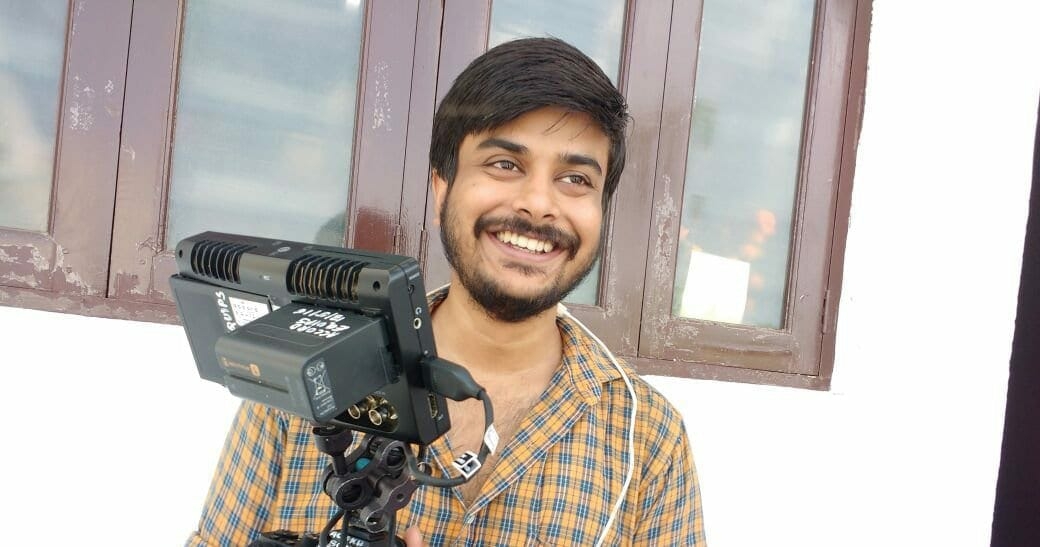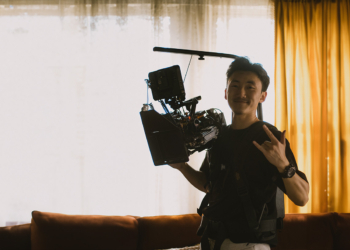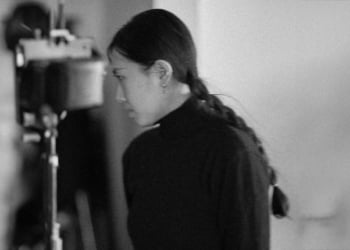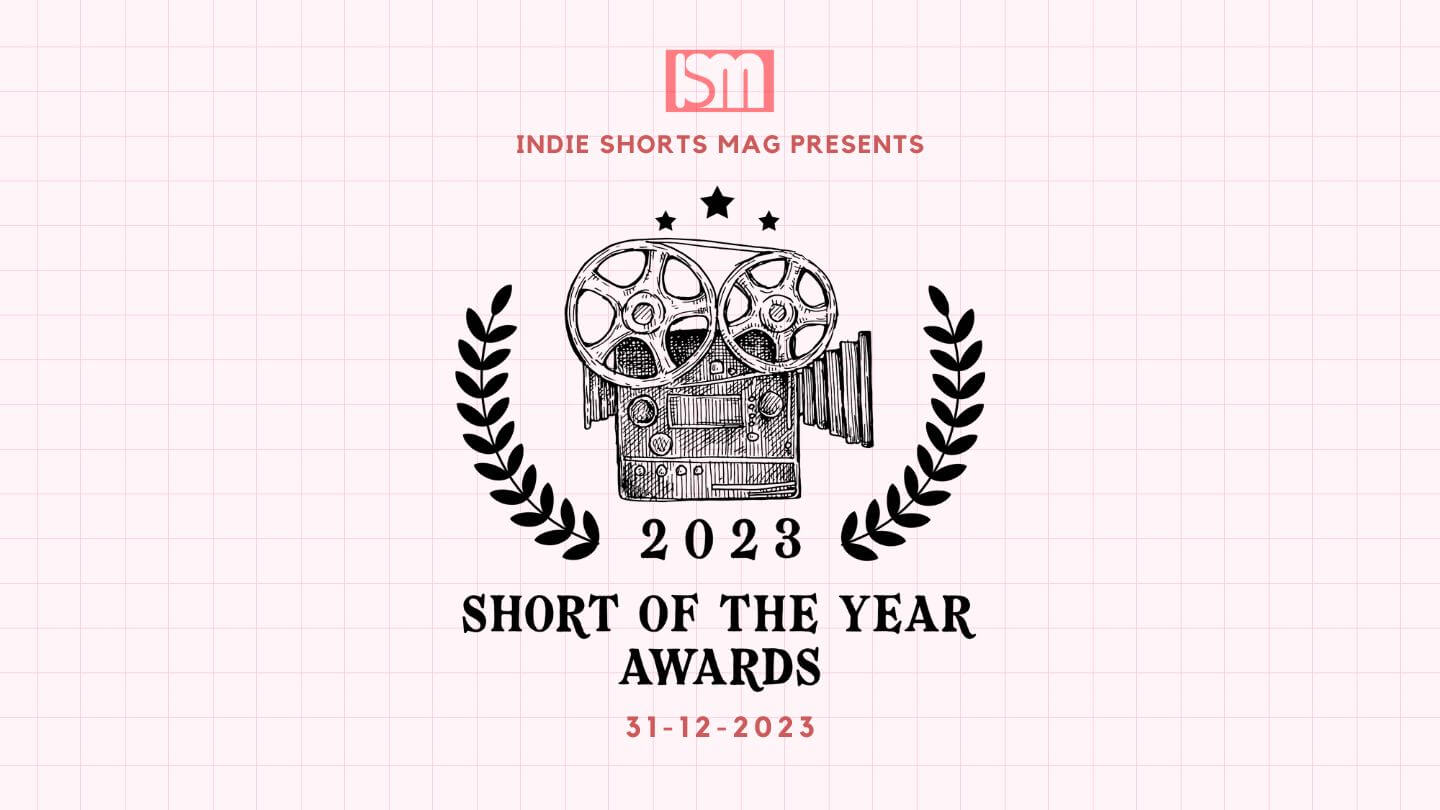Piyush Srivastava is a screenwriter, director and producer. A self-confessed fan of the horror genre, one of his recent shorts A Tale Of The Onion Witch has been very well received. A witty blend of the horror and satire, the short offers an interesting take on the traditional horror storytelling. As he moves on to his future projects, which includes web series, a potential feature-length and an almost likely sequel, we manage to track him down in Malaysia where he is currently stationed working on an animated TV series.
- So, Piyush, tell us something about yourself and your journey to becoming a filmmaker?
Filmmaking happened rather organically to me. I come from a family of movie aficionados. My parents valued and appreciated films tremendously and I guess, somewhere along the line that trait got imbued in me as well. Still, it took me my own sweet time to shape that interest into a serious prospect.
I started writing stories while I was still in school. When I was about 14-15 years of age, I ended up writing a 200-page story that eventually got published into a novel, in the year 2010. I unknowingly made my first short film when I was 12 years old. Along with my neighbour and cousins, we enacted a story, recorded it on a Handycam and presented the recorded footage as the final product with some very basic title additions that were done on Windows’ Movie Maker (the very first edition of that software). And, I think that was when the real seeds were sown; the start to this amazing journey to explore and learn different ways to storytelling. Bringing to the forefront, interesting and varied stories remain my constant endeavour and endless fascination.
- Which films or filmmakers have influenced your style or vision the most?
Oooh, that’s quite a few! The first 5 names that come to mind are Lagaan, Old Boy, Dial M for Murder, Khosla ka Ghosla, Inglourious Basterds. The list is frankly endless and this interview could go on (laughs). There are so many different films with different styles, and unique in their ways of narration that it only makes me greedy and wonder how and why it is that I never thought of it this way before!
And, I don’t want to stick to one style or a certain range of genres. I am eager to explore all the styles and genres depending on the demand of the story.
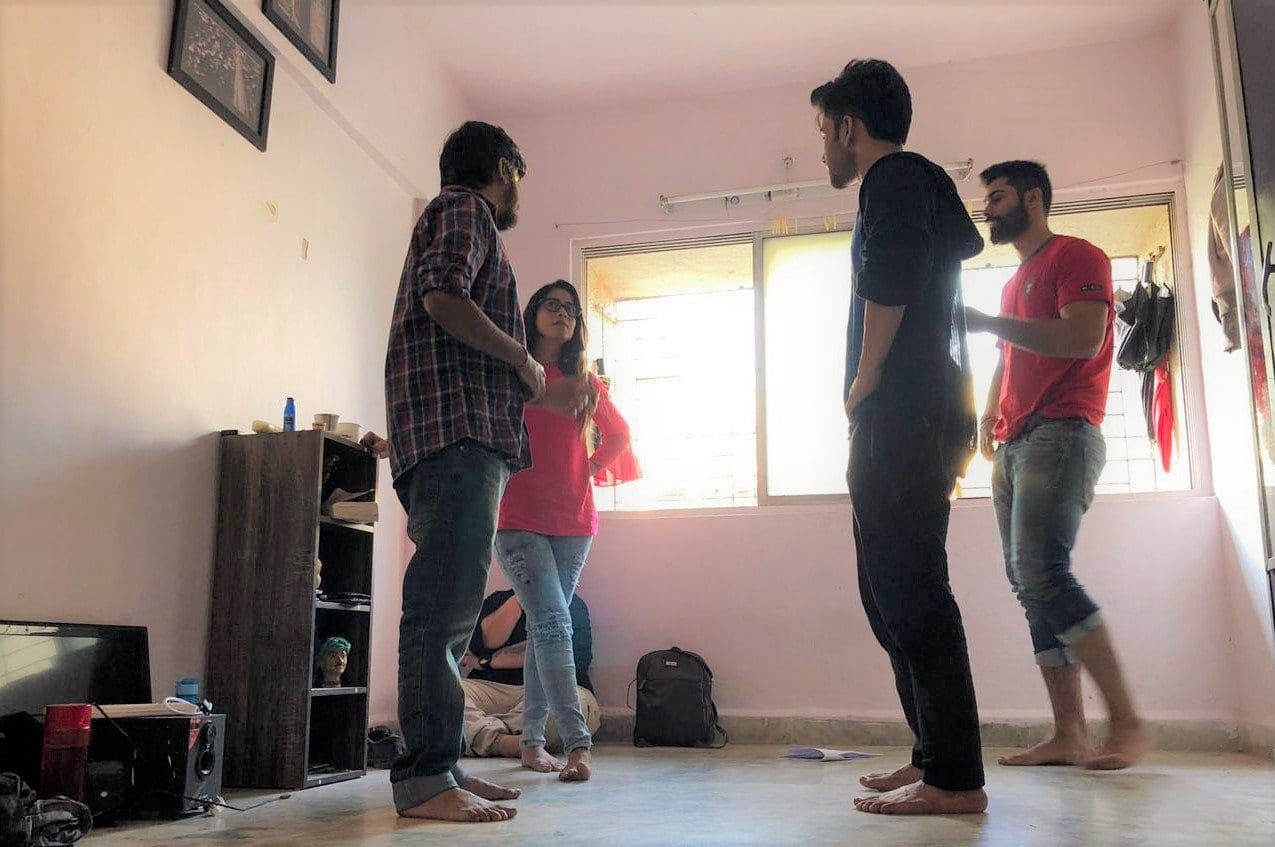
- Every industry has its own challenges. What were the challenges of the film industry that caught you by surprise?
I was quite surprised to find that the executives in the studios who are responsible to seek/curate content for their platform are not really keen on reading. In fact, they just don’t read screenplays that are presented to them! That makes it doubly hard for someone like myself who isn’t particularly good with narration (I am mostly talking about the bigger forms like a web series which literally takes months and sometimes years to write & consumes hours in time if it requires narration).
What I’ve been asked most of the time is to give a one-liner or a summary of just a few words which aren’t always ideal to high concepts. So, I am now devising new and interesting ways to make my pitches more engaging and less reliant on just words!
No matter what medium we choose we have to make sure we’re not showcasing the pros of the medium or trying to make a product demo out of it, rather we’re trying to engage the audience with good storytelling, great performances and decent aesthetics to begin with.
- Today, films are shot on iPhones, released online, marketed digitally. Why, even the post-production is undertaken remotely. Amidst all these changes, what has remained constant, in your observation?
The fact that regardless of the medium chosen, be it a project shot on IMAX and released worldwide in the theatres or a film shot on, as you mentioned, an iPhone and released online, we are all out here to tell stories, ultimately. And, no matter what medium we choose we have to make sure we’re not showcasing the pros of the medium or trying to make a product demo out of it, rather we’re trying to engage the audience with good storytelling, great performances and decent aesthetics to begin with.
And, if the story is engaging enough, the performances are believable, then the medium simply becomes a tool and not the be-all and end-all of this universe.
- What can you tell budding filmmakers about having to work on shoestring budgets? What were your takeaways from shooting on a low budget yourself?
(Thinks) Well, the primary aim of working on a tight budget is to make your film without compromising on its quality. In other words, it’s not the audience’s prerogative to worry about the investment you made or lack of it. They are simply there to watch and appreciate your work provided it is believable enough for them.
To begin with, you must have a good grasp of your own story, and what I mean by that is, one must know each and every scene, sometimes even the shots in and out. Then you need to work on the alternatives. Sit down and replace all the possible expensive shots with an alternate. For example, if a shot demands a crane in order to hoist the camera to reveal the larger picture and you know it isn’t impossible to obtain a crane for that single shot with the budget you have; then simply try and find an alternative, but certainly don’t abandon the idea! So, maybe you could work on ways to incorporate the same shot aesthetically that doesn’t require compromising on the scene or its purpose in the story. So maybe use a static camera in a manner that still justifies your shot and reasoning? That will ensure that you aren’t compromising on your story but at the same time, you aren’t stretching your budget.
Avoid locations that require shoot permits. Avoid picking places that are dark because then you will have to rely on heavy lights for the lighting of the night scenes. Choose locations that get a good amount of natural light, so your day scenes are taken care of. Work smart on your budget, go guerilla for crowd scenes, ask for favours from your friends and family unabashedly, as I do (laughs)! But, what you need to bear in mind is all these tricks work and come in handy if and only if the story you have picked is low-budget friendly. Because I am certain you wouldn’t have heard of a period or a fantasy film that was shot on a shoestring budget. That would be some revolution!
From my own personal experience, I can vouch that planning ahead pays off. Because, with a low-budget, your working days are downsized anyway and you know that you have to be quick so you can’t afford wasting time on say, worrying about where to place the camera or where and how to stage your actors for a day scene.
For my film, A Tale Of An Onion Witch, I storyboarded key scenes, made a shot-list, and rehearsed the scenes well in advance. And another important thing is to invest in good food when you’re working on low budgets. That keeps up the energy going & you don’t have to deal with yawning faces around you. This comes from very close, personal experience (laughs).
As a director, I know when a particular scene isn’t working out during the take itself, but I never interrupt the actors’ flow unless there’s a grave issue. So, usually, I wait it out until they are done with the scene and then calmly walk up to them and discuss what I think went wrong. How calm that process is, is up for debate.
- Tell me something. Filmmaking is a long, many-headed monster of a creative process. What is the most intimidating aspect of production and what is most likely to go wrong?
Wow! Okay, so for me, that moment in which you are all set to roll the camera… You have your actor framed, they are all set to deliver the lines and you are certain of what to expect in terms of the performance. I am at times left out of my depth.
(Please elaborate)
Okay, so I am expecting things to go in a certain way but after I say action there are these unexpected moments when the actor picks up a certain rhythm or manner which may not necessarily match with what I’d have visioned. So after we cut the shot it gets tricky, because I need to decide if that performance, even though it is not close to what I had in mind, but certainly isn’t bad either, is good enough to go into the edit or not. Follow what I mean? So moments such as these, get baffling. And you just have like a couple of minutes to make up your mind on whether to stick with it or go for a retake…
Now, as a director, I know when a particular scene isn’t working out during the take itself, but I never interrupt the actors’ flow unless there’s a grave issue. So, usually, I wait it out until they are done with the scene and then calmly walk up to them and discuss what I think went wrong. How calm that process is, is up for debate. (laughs)
So I make mental notes even in the middle of the shoot so I know what and how I can improve in my next take. But, then people around you have very visceral reactions once you say cut. They are impressed or moved by the performance and the congratulations pour in and I get into my self-introspection mode wondering if I was wrong in my assumption and if indeed I should second their opinion and okay the take.
And I’ve fallen for that ruse quite often and failed miserably. So, my final conclusion is to always go by your gut instinct regardless of the feedback you receive, because no one knows what vision you have for the film/scene as much as you do.
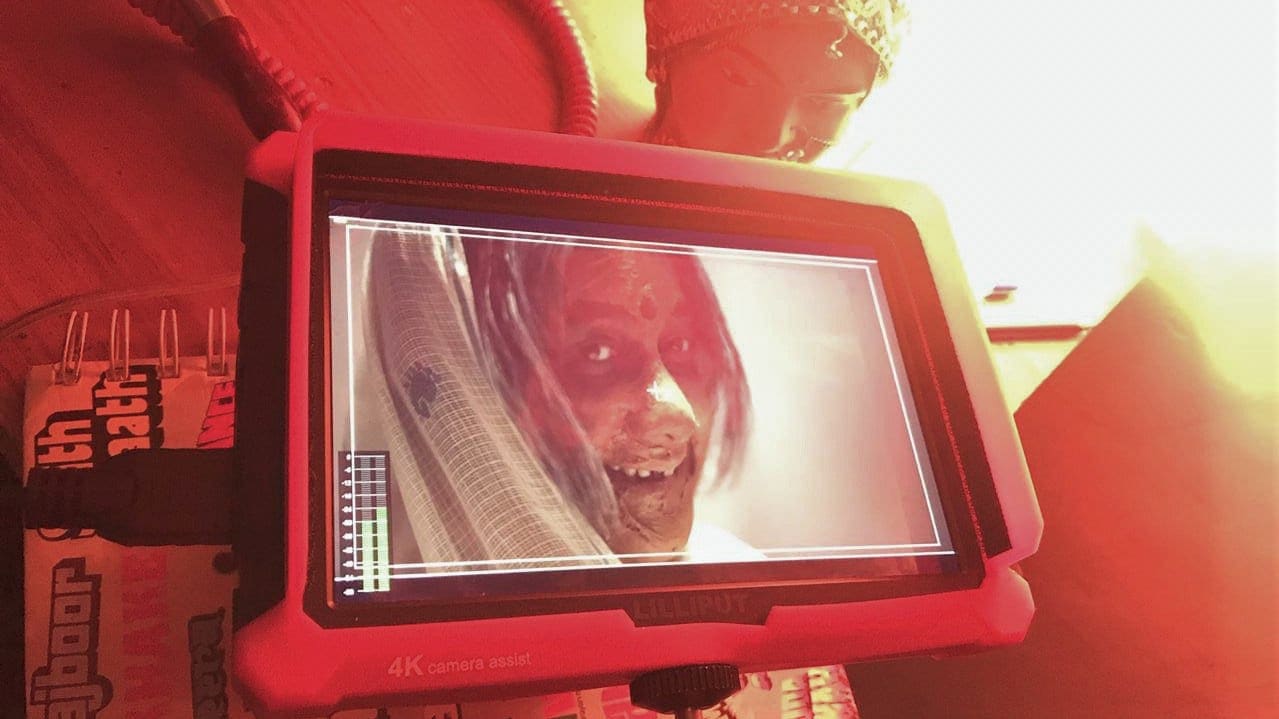
- One of your recent shorts (A Tale Of An Onion Witch – ATOAOW) was a horror. A niche choice, some might say. What drew you to pick horror?
A Tale of an Onion Witch was my 7th short film & second attempt at horror, actually. The first one was a 5-minute short with a funny twist to its end. ATOAOW, in fact, as I recall was an idea that I’d conceived way back in 2014. It was a two-page story then, that I’d written to pitch to a producer who had approached me after watching my first horror short.
So, yeah, ATOAOW was one of the pitches I made. However, that didn’t work out then so I went ahead making other films and later somewhere in 2019 I was called for another narration for some other story and I decided to narrate this one again, as a bonus of sorts. The response I got was phenomenal and as I saw the excitement sprawl across their faces, I realised I wanted this for myself. Greed eventually took over and I decided to have ATOAOW for myself (laughs).
- The title of ATOAOW is brilliant. It sums up the genres involved and lays the premise bare. Did it take you long to zero in on this? How important are titles to filmmakers and what’s your thought on it?
Come to think of it, I didn’t take long to narrow in on ATOAOW’s title. In fact, it was the only title I thought of. Back in 2014, I had named it as the Onion Witch Story. Later renamed it to A Tale of an Onion Witch which I felt was more apt considering the narrative style I was opting for. So there was no brainstorming as such on deciding the title. Sigh!
It was pretty easy to come up with this one. But, talking about the importance of titles, now that we’re in a digital space wherein there are trillions of videos around us being uploaded literally every second, titling your video or product becomes important; because you want it to be unique and at the same time catchy while also justify the premise of your story. It’s like walking into a bookstore exploring the books on the shelf. It is the title of the book that catches your attention and persuades you to pull it out of the shelf to know more about it unless you’re already familiar with the author. There goes your don’t-judge-a-book-by-its-cover out of the window! (laughs)
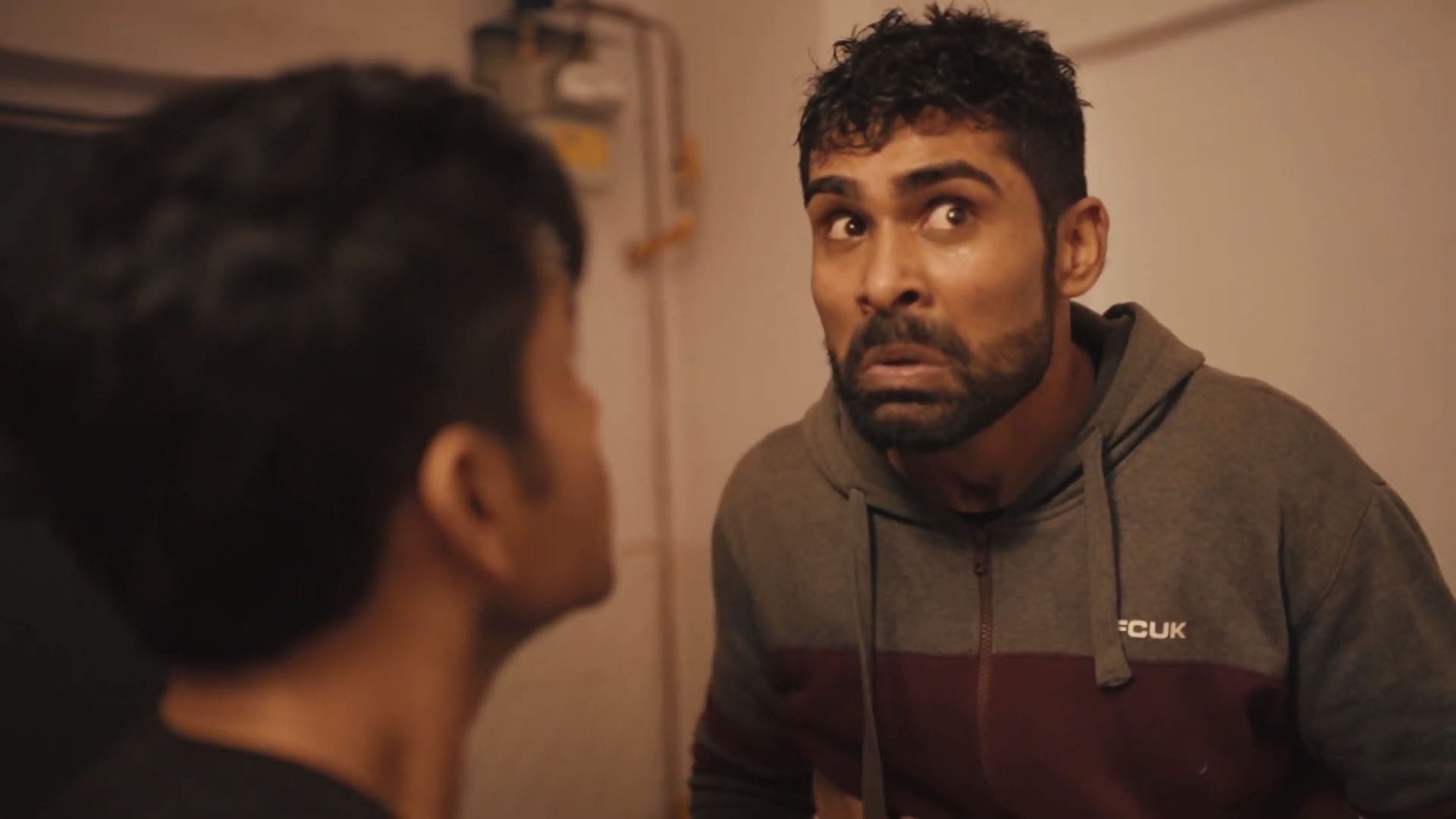
- ATOAOW has been very well received. What inspired you to add satire to it?
The very first draft of the film was purely written as a serious horror with thrilling elements to it. And for a very long time, it stayed that way. We even added a flashback sequence where we dip into the history of the Onion Witch and tell about the origin of Krina and Mangla’s involvement with witchcraft. So, I was in fact, pretty much clear on Krina and Mangla’s part and it was very much their story, in exclusivity.
But later when I sat down to write the very first draft of the screenplay I realised that it was getting unnecessarily dragged for a short film. And, since horror, as it is, works on a thin line; the possibility of it working or not constantly loomed. So, in order to balance it out, we wrote a couple of gags around the book called Sapiens which the boys lie about in order to impress the neighbour, who shows up at their apartment late at night. This was done just to establish the lust the boys had for her which I felt would be a natural response from them.
And from there, we stretched the gag a bit more and in came a point where we knew we could add more character to these boys in order to not just depend on the horror part of it but also explore the humour that arises when we see them trapped in this terrifying situation. So that’s how Rohit & Dinesh’s character evolved & through them we were able to add a sense of humour to the story which I think was essential to balance it out with the horror that was unfolding in front of them.
- ATOAOW is set in Mumbai. How negotiable are locations to your stories?
I always opt for real locations that match as closely as possible with the demands of the story. So, if it’s a 1-BHK Mumbai flat that is to be occupied by bachelors then it has to be so in the real world too. Likewise, if it’s a family that’s meant to reside in it then it has to be so; authentic and believable. The idea behind this is simple – I don’t want to spend my time or energy getting a make-over done for a place! Instead, I simply opt for a location that is nearly 80% close to what I have in mind and thereafter only add minute details to it, to make it more relevant to the story.
I have never shot on a set constructed in a studio or used a green screen so far.
(Go on)
For A Tale of an Onion Witch, I shot the film in my own flat because it was already rented by two of us, myself & Abhishek Bhoyar (Executive Producer on the film). The condition of the flat matched closely with what was required for Rohit & Dinesh’s flat in the film. Later we had Kanika Tulsyan (Art) who came in and added those subtle details to make it more believable and did tiny tweaks like adding fancy lamps, Xbox, hookah, bean bag, used liquor bottles that just gave the much-needed authenticity for the filming.
- The performances in ATOAOW are surprisingly believable for such an outlandish premise. How did you extract these performances from the actors?
Thank you! I got lucky with the casting actually, all thanks to Maahir Kumbhakoni (Associate Director) who helped me in the casting process. He was the one who suggested Amita Kulkarni’s name. Then another friend of mine suggested Prakhar’s name. I met him and he was really someone with a charming personality, the trait which I was looking for in Rohit’s character. Prakhar later suggested to me Saurav Mukhija who was actually his roommate. I didn’t have a second thought because I was getting ready-made chemistry between the two prime characters. What else could I have asked for?
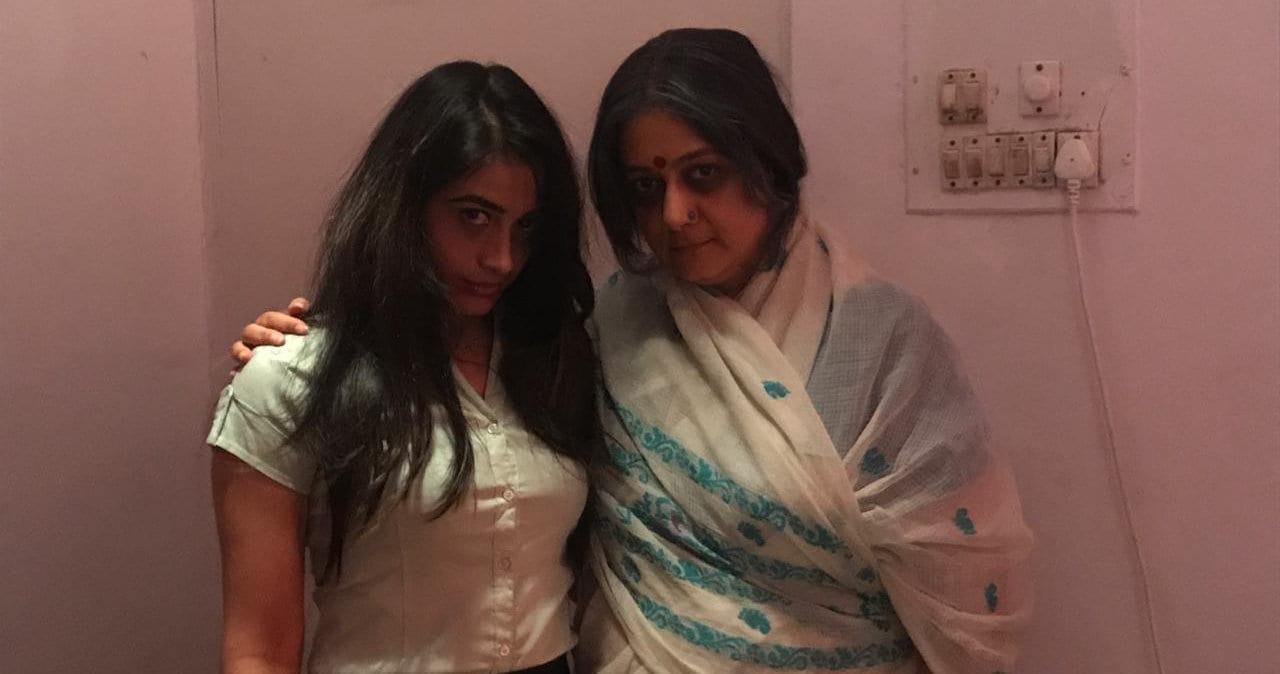
Even so, I asked them to audition with a small scene and the results didn’t surprise me at all. They met my expectations perfectly fine. And from there on I think we met for a couple of discussions. The two boys had a pretty good grasp on their characters much before the shoot dates. And, they both are fabulous actors, mind you.
With Amita too, I did a couple of readings and she understood the character pretty well. After a couple of rehearsals, we were pretty much on the same page. And once that was achieved, on the shoot days, our aim was to simply push the performances and improvise and deliver to our optimum.
All of the actors knew their craft well and most importantly understood the requirements of their characters and story well, so I really didn’t think I had to work that hard on trying to extract performances from them. It came naturally from them. So, all the credit here goes to casting the right people.
- Archana Mittal is a particularly grounding presence. How did she come to be involved in the project?
Archana Mittal is one of my favourite actors. ATOAOW is my third film with her, in fact, that alone should say something. She has always been on my wish list for almost all of my projects. Sometimes intentionally, sometimes unintentionally, but she’s always there and the reason is not just because she is a fantastic actor but also because she is a wonderful human being. It’s a delight to just talk to her, spending time with her.
On-set she is the source of energy & inspiration for all of us, especially me. She understands the script in and out & not just her part but the other characters too. For this film specifically, we never even did a reading together. In fact, I didn’t even have to tell her what to do. She simply read the screenplay and that was it; just that! Whatever I wanted to communicate to her about the character she already understood from the screenplay & so I was just simply watching her perform. And, she is spot-on that way. The only thing we worked on was the look of Mangla. I think Megha More (Makeup & Hair) did a pretty good job on that. Even the slight touch of a dialect was something that Archana had adapted herself into. I had no doings in that either. She owned the character entirely.
- ATOAOW is brilliantly edited. How far was that process predetermined and how much was a result of spur-of-the-moment inspiration?
While writing itself I knew how I would be editing it. So for the most part, the editing was already done on the paper. I had a fair idea of how the pacing and cutting would be. My first approach with the editing was to edit it as it is written on the paper. And, since I had already done that; a certain amount of editing on the paper, that is, I just had to blindly follow that; to begin with, and that became my first cut.
I then showed it to my friends, family members to observe their reactions & made notes of it. Then I disconnected myself from the film for a week or so and came back and saw it from a fresh perspective and referred back to the notes. I could only see the mistakes then.
(Go on)
So, from that point on, I removed the writer-director’s hat to avoid their interference with my editing process and unhesitatingly went ahead with chopping off the scenes or shots that I felt were redundant to my story. And then it’s just a process of trial and error, mix and match, try and shuffle scenes, and possibly see the film from different perspectives to a point where you know that if one more shot is to be removed then the film won’t make sense and that’s when I know that I have my crisp, final cut.
So, basically the final edit is a mix of predetermined and instant decisions taken over a course of three months.
- Do you find it easier or more complex to collaborate on a script, as opposed to going on it alone?
I find it easy collaborating on a script but that collaboration is only limited to a few people I know. Pradeep Kumar (co-writer) is one of them because we both somewhat share similar interests when it comes to certain kinds of films and stories. This is our 4th film together which we have co-written. He watches quite a lot of world cinema, films which I haven’t even heard of, so I utilise his knowledge & experience to the advantage of our story.
It usually starts with an idea and then we go on and discuss it out and see if it carries any potential with it. Out of those discussions I take notes and from them, I then write down the basic form of my story. I, later, share it with him, he gives me his perspective or feedback, which we eventually argue about too, sometimes and then narrow down on one single thing.
(I see… That seems interesting. Please continue.)
Very. And, that keeps on evolving organically until a point we both are satisfied with the written material. But, interestingly the final screenplay is something I usually write by myself. Alone. I only bounce off a draft of the written material for him to read and critique.
- This has been wonderful. On a final note, what piece of advice do you have for budding filmmakers?
(Smiles)
– Always spend more time on the preproduction. That is the stage wherein you can make the film before you start shooting it.
– Never settle on your first draft or your first cut. There’s always ample scope to make it crispier.
– And, never compromise on the quality no matter what the budget is.
(Edited for clarity.)


